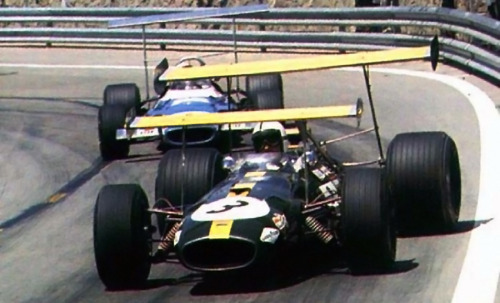The Indianapolis Motor Speedway is hosting the 100th anniversary of the "500" this year and so far, it has been nothing more than a blip on the radar as far as the media is concerned - And this is a great shame. With Nascar down in attendance and the Indy racing series struggling, the blame has been placed right square on the economy, and although in many ways this is true, the downturn in racing has been going on much longer than the last two or three years.
With the IndyCar Series, there was a fallout with fans that dates back to the mid-90's when Tony George engineered a split between his race track - the Indianapolis Motor Speedway, the home of the Indy 500 - and CART, which tore apart a thriving series. With Nascar it has been a slow decline that started with a change in major sponsorship - Winston Cup to the Nextel Cup - and rules changes that included the addition of "The Chase" and a move away from actual cars towards cars that are race designed but have no real connection with anything anyone drives today.
For me, the bottom line is this. If you are driving a race car, of any type, and you don't lift going through a turn, you aren't racing... you are just a great big slot car. At Indy and the high banked tracks the IndyCar series runs on, the drivers are, for the most part, flat out all the way around the track. This is not what racing is about. Somehow, somewhere, someone in charge dropped the ball.
Indy used to be about speed, the incremental rise in m.p.h. year after year, the anticipation of a new record, the awe at the drivers abilities and courage and the smiles at a builders ingenuity and sometimes, flat out cheating.
He started with sports cars and his own design called the Chaparral, which initially had a small upturned bill at the back of the car that forced the air over it, putting down-force on the rear wheels, adding traction.
This was followed by a huge wing that stood above the car at the back and eventually moved to a wing that went from flat level down the stretch to standing straight up with the application of brakes, and then to a vacuum motor that sucked air out from under the car, creating a vacuum to hold the car down.
The wings quickly spread thru-out Formula One and IndyCar and by the mid 70's speeds has risen by nearly 50 mph from the mid-60's.
 |
| Jim Clark (seated in car) with the designer of the Lotus Colin Chapman kneeling with his arm on the car - Indy 1965 |
 |
| Formula One circa 1969 |
 |
| Indy 1975 |
 |
| Al Unser Jr. Indy 1992 |
Nascar has been moving away from cars that looked like real cars, since the early 90's. The cars have vertical sides, no side mirrors, air dams that keep air from going under the car, and more and more down-force. At Daytona and Talladega, it is as far away from real racing as you can get. Restrictor plates and aerodynamics that keep the cars close, artificially so, and no one can pass without the help of another driver. Anything about this that resembles anything close to racing as we knew it?
 |
| Nascar 1978 |
A Nascar car that allows drivers to pass, draft and drive on a big oval like they do on the short tracks.
Take away the aero packages, have maximum wind tunnel numbers. For IndyCars, stock block motors, pistons crank and rods. Head work optional. Set a higher minimum weight so that cars don't have to be built with NASA spec materials. If they did this, how many cars could be built in professional garages across the country, just like way back when. If you don't have to spend millions on wind tunnel time, computer cad designers and such, you have more people involved... just build the car to the spec, build your own engine and have a go.
Technology is not a bad thing in auto racing when it helps safety, but speed, just for the sake of speed is not what the sport is about, although those that run them would have you think so.
It will take a visionary to realize what's wrong with motor-sports and lead the way back to real racing.
It's such a shame.

